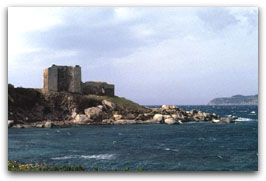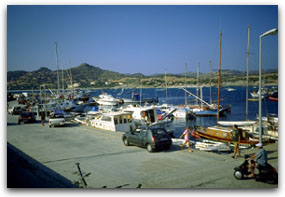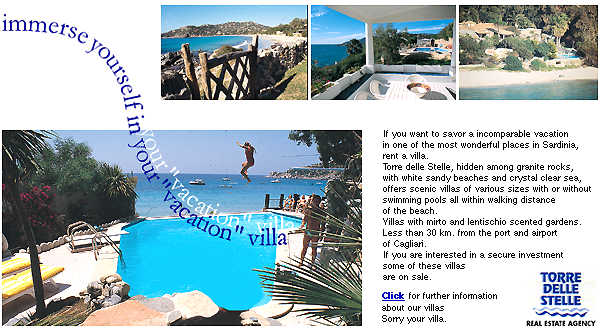The highest part of
Capo Carbonara overlooks the whole coast which is characterised by pink granite rocks.
In front of it rises the island of Cavoli, whose name derives from the Cagliari dialect for crabs.
This is an unavoidable destination for all the boats which pass because of the transparency of
its sea and the beauty of its sea beds. This granite based island, is very interesting not only
for the big lighthouse, but also for its vegetation and most of all for the fauna that includes the
corso sea gull (which is a protected species), the Sardinian warbler and the
sandpiper.
|
Capo Carbonara represents a
natural buoy for people who, sailing around Sardinia, decide to
enter Golfo degli Angeli (in the middle of which there is Cagliari, the capital of Sardinia) or for
those travelling in the opposite direction. The windy Capo Carbonara has been a silent witness
to many shipwrecks in the course of the centuries. Many roman ships have been found and
identified on its sea beds. Local divers have set near the Isola dei Cavoli, at a depth of 10
metres, the "Madonna del Naufrago", that is a trackyte statue by the sculptor Pinuccio Sciola.
As it can be seen without entering the water it has become a popular destination for people
interested in the sea.
|
|

 Villasimius - Fortezza vecchia Villasimius - Fortezza vecchia |

 Villasimius - Il porto Villasimius - Il porto |
|
Rounding Capo Carbonara the
port of Villasimius comes into sight. This
port, which was recently finished, is able to offer
shelter and the most important mooring services. This village, sleepy and lazy during the
winter, seems to wake up suddenly during the summer when the tourists stream in. They are
attracted to this area by its excellent hotels and the wonderful sea mentioned above. The heart
of the village is, of course, the urban centre that, in the warm evening hours, is crowded and
its handicraft shops and boutiques attract the tourists.
|
Advertising:
|

|
|